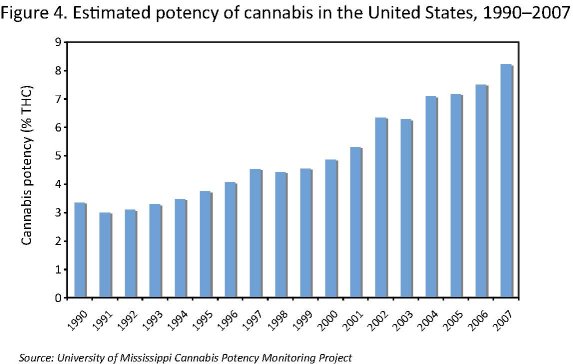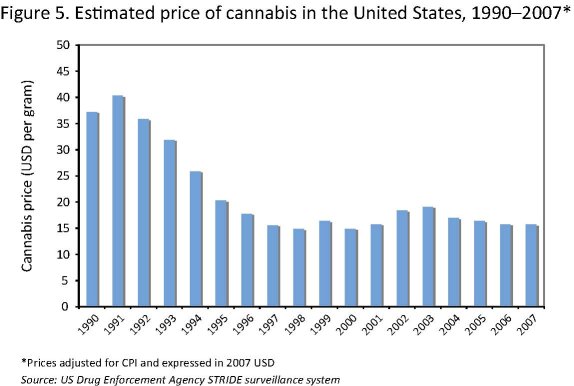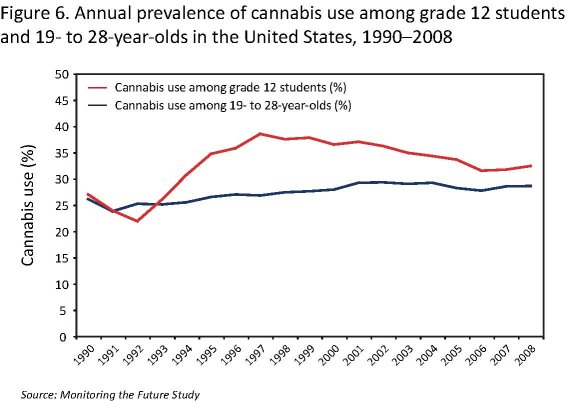CANNABIS PRICE, POTENCY, USE AND AVAILABILITY
| Reports - Tools for Debate |
Drug Abuse
CANNABIS PRICE, POTENCY, USE AND AVAILABILITY
We tested the assumption that increased funding for cannabis prohibition reduces the drug’s availability by evaluating US federally funded surveillance systems examining markers of cannabis potency, price, availability and rates of use. As above, unless otherwise noted, the data presented in figures have been restricted to 1990 onwards to reflect the patterns observed over approximately the last two decades.
The limitations of cannabis prohibition in the US are demonstrated by the substantial increase in cannabis potency that has been observed over the last several decades despite increasing funding to drug law enforcement efforts (Figure 4). According to the University of Mississippi Cannabis Potency Monitoring Project, which is funded by the US National Institutes of Health, scientific monitoring of cannabis potency shows that the estimated delta-9-tetrahydrocannabinol (THC) content of US cannabis has risen by approximately 145%, from 3.5% in 1990 to over 8.5% in 2007.23
Evidence of prohibition’s failure to reduce the supply of cannabis is demonstrated by estimates derived from the US Drug Enforcement Agency which show a decrease of about 58% in the retail price of US cannabis, from an inflation-adjusted retail price of $37 per gram in 1990 to $15 per gram in 2007 (Figure 5).24
The limitations of US cannabis prohibition are also demonstrated by the ease with which American youth report being able to obtain the drug. According to the US drug use surveillance systems funded by the US National Institutes on Drug Abuse, over the last 30 years of cannabis prohibition the drug has remained “almost universally available to American 12th graders,” with 80–90% over this period saying the drug is “very easy” or “fairly easy” to obtain.25 The failure of prohibition to reduce cannabis supply is also evidenced by estimates from the US Substance Abuse and Mental Health Services Administration that about 60% of school-aged US youth who use cannabis either obtained their most recently used cannabis for free or shared someone else’s.26 Interestingly, rates of cannabis use among American youth do not inversely correlate with levels of funding for cannabis prohibition. Instead, the estimated annual prevalence of cannabis use among US grade 12 students rose from 27% in 1990 to 32% in 2008, and among 19- to 28-year-olds prevalence of use rose from 26% in 1990 to 29% in 2008 (Figure 6).27



| < Prev | Next > |
|---|












